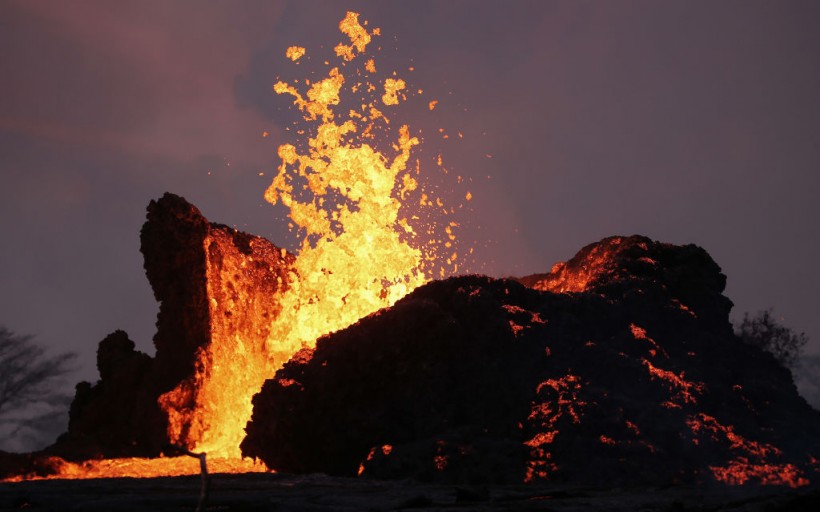A new analysis of broken fragments of ancient volcanic rock dredged from the south-eastern flank of the Big Island recently suggested that the Kilauea volcano was born from a pool of pyroclastic material almost 100 kilometers deep.
A ScienceAlert report said that the said volcano in Hawaii is said to be the world's most active volcano, yet it remains unknown how it was born.
The Source of The World's Most Active Volcano Might Finally Be Pinpointed https://t.co/2Rcz0hNrLZ
— ScienceAlert (@ScienceAlert) May 30, 2022
A new study has suggested that the original womb of magma lies over 90 kilometers underneath the hotspot. Whereas previous studies have shown two shallow chambers o magma underneath Kīlauea, they were not large enough to explain all the liquid rock this particular volcano spews.
Moreover, a large number, roughly 11 kilometers deep, was detected in 2014 through seismic wage, and yet now it appears the original magma chamber lies even deeper.

Lava erupted and flowed from a Kilauea volcano fissure in Leilani Estates on Hawaii's Big Island in 2018.
Hard to Find
Between 210,000 and 280,000 years ago, the Pacific tectonic plate shifted, and a plume of magma flowed upwards from the sea.
As the piping hot liquid cooled and hardened, it formed a massive "shield" that burst through the waves around 100,000 years back.
So, Kīlauea came to be, although the original rocks from the hotspot are tremendously hard to find, buried as they are under many layers of the newer larva.
Essentially, the current study's igneous rock dredged up offers an unprecedented glimpse into the deep and distant past.
Formed Through Fractional Crystallization
Before, it was believed the Kīlauea volcano was created through solid rock partly melting from the hotspot's heat.
This new study published in Nature Communication finds no evidence to support that hypothesis. The rocks retrieved were found to comprise a suite of unusual earth elements models suggest could only be formed in a specific manner.
Instead of partial melting, it appears that the Kīlauea volcano was originally formed through fractional crystallization.
The term describes the crystals' creation in deep pools of magma, which are not reacting when residual melt later on.
Origins of the First Eruption
According to the study's lead author, Laura Miller, a geologist from Monash University in Australia, they explored the formation of the samples through experimental work, which involved melting synthetic rocks at a high 1,100 degrees-Celsius temperature, and pressure at three GPa. as well as by using a new approach for modeling their unusual Earth element concentrations.
She also said that they found that the samples could be formed through the crystallization and elimination of garnet.
Essentially, garnet is a crystal capable of forming when magma is subject to high pressures and temperatures over 90 kilometers underneath the crust of the Earth.
The fact that its presence is required to explain the rocks' composition from Kīlauea suggests the origins of eruption came from the same depths or, probably, even deeper.
Experiments have shown that garnet can be crystallized at depths of 150 kilometers underneath the earth's crust.
The Hawaiian islands' source may not be that deep, but the new findings suggest that the plumbing of Kīlauea, detailed in a USGS report, is not almost as superficial as once thought.
Related information about the Kilauea volcano is shown on Future Unity's YouTube video below:
RELATED ARTICLE: Kīlauea Caldera Survey Helps Check Possible Changes in Volcano's Gas Emissions After 2018 Eruption
Check out more news and information on Volcanoes in Science Times.














